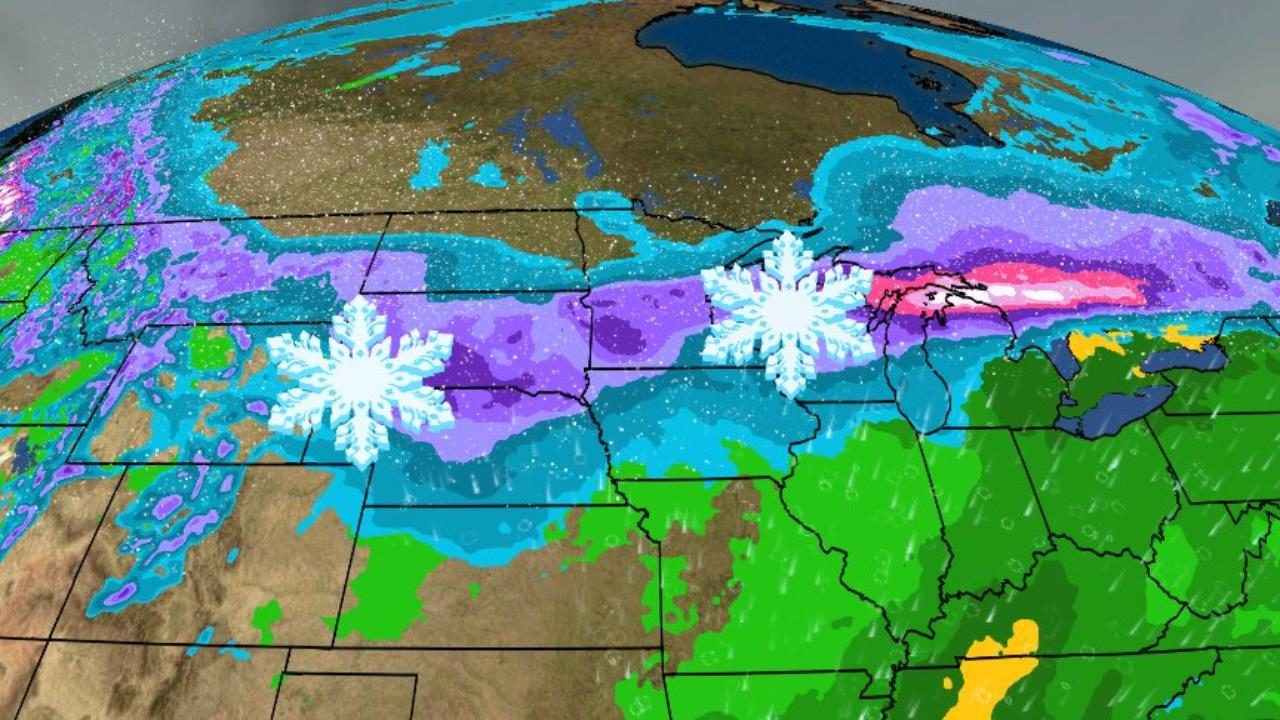Story Highlights
Winter Storm Xanto brought record April snowfall to the upper Midwest and Great Lakes in mid-April 2018.
Xanto was the heaviest April snowstorm on record in Minneapolis/St. Paul.
Xanto was the second-heaviest snowstorm of all-time in Green Bay, Wisconsin.
Winter Storm Xanto (pronounced ZAN-toe) dumped record snow for the month of April on parts of the upper Midwest and Great Lakes, including Minneapolis/St. Paul and Green Bay, Wisconsin.
Here is a recap of this historic storm from mid-April 2018.
Record Snowstorm for April
Xanto officially brought 15.8 inches of snow to Minneapolis/St. Paul April 13-16, making it the heaviest April snowstorm on record there.
What's more, it was also the 12th-heaviest snowstorm of all-time in the Twin Cities.
Winter Storm Xanto pushed Minneapolis/St. Paul to its snowiest April on record, with 26.1 inches of snow as of April 16.
Green Bay, Wisconsin, picked up an astonishing 24.2 inches of snow from Xanto April 13-16, ranking not only as the city's heaviest April storm, but also the second-heaviest snowstorm of all-time. Blizzard conditions were observed in Green Bay 11 a.m. to 2 p.m. CDT on April 15.
In north-central Wisconsin, 20.7 inches of snow piled up in Wausau, making Xanto the heaviest April snowstorm on record there, as well as the second-heaviest snowstorm of all-time.
Sioux Falls, South Dakota, received 13.7 inches of snow from Xanto on April 14, making it the heaviest one-day April snow total on record in the city. The total from the entire storm was 14.3 inches.
The highest snowfall total was 33 inches in Amherst, Wisconsin. Drifts 5 to 6 feet high were also reported in that location.
Xanto Recap
Winter Storm Xanto dropped into the northwestern United States on April 11 as a strong mid- to upper-level jet stream disturbance. This disturbance crossed the northern and central Rockies the following day before becoming a strong surface low-pressure system in Kansas and Nebraska on April 13. The sluggish, strong low-pressure system continued to batter the Great Lakes, Midwest and central Plains April 14-15.
Here are some of the top snow and ice reports from Xanto by state.
Snowfall Reports
- Colorado: 14.5 near Cedaredge, 10 inches near Berthoud Falls and Julesburg
- Illinois: 2.2 inches in Nora
- Iowa: 16 inches in Ruthven;6.5 inches in Sioux City
- Kansas: 5 inches in Bird City; 3.2 inches near Goodland
- Michigan: 24.4 inches near Negaunee
- Minnesota: 27.1 inches near Richfield; 15.8 inches at Minneapolis/St. Paul International Airport
- Montana: 25 inches near Bozeman; 14 inches in Grass Range
- Nebraska: 14 inches in Newport and Mullen; 11 inches near Valentine
- New Hampshire: 2 inches in Berlin
- New York: 2 inches near Chazy
- North Dakota: 6 inches in Medora, Hirschville and Dunn Center
- South Dakota: 20 inches near Okreek and Winner; 19 inches in Huron; 14.3 inches in Sioux Falls
- Utah: 28 inches in the Alta Ski Area at the summit; 10 inches in Brighton and Alta
- Vermont: 2.5 inches near Milton; 1.1 inches (sleet) near South Burlington
- Wisconsin: 33 inches in Amherst; 24.2 inches in Green Bay; 20.7 inches in Wausau
- Wyoming: 18 inches near Alta; 12 inches near Jackson and Afton
- Illinois: 3/16 inch in Grayslake, Wauconda, Lindenhurst and Marengo
- Indiana: 3/16 inch near Salem Center
- Michigan: 5/8 inch near Midland
- Minnesota: 1/4 inch near Douglas
- New York: 1 inch in Lowville; nearly 1/4 inch in Buffalo
Strong winds, some in excess of 70 mph, were seen from California to Utah and Wyoming as the jet stream disturbance dropped into the West. A dash of snow was seen in California's Sierra, but heavier snow fell in the Cascades and Utah's Wasatch.
Almost 10 inches of snow had accumulated near Great Falls, Montana, and 20 to 25 inches of snow was estimated in the Bridger Range north of Bozeman.
Comment: Both the jet stream and the Gulf stream are seeing their patterns become increasingly erratic:
Plains/Midwest: April 13-14
Thundersnow and snowfall rates up to 3 inches per hour were reported in South Dakota and western Nebraska. Blizzard and near-blizzard conditions occurred in eastern Colorado, much of Nebraska, much of South Dakota and parts of southwestern Minnesota. Blizzard warnings were issued for parts of six states:South Dakota, Colorado, Nebraska, Kansas, Iowa and Minnesota.
Several locations - including Imperial, Nebraska, near North Platte, Nebraska, Kit Carson, Colorado, and Goodland, Kansas - reported near-blizzard conditions in eastern Colorado, western Kansas, Nebraska, southern Minnesota and northwestern Iowa.
Most major interstates and roads in South Dakota and western Nebraska were closed due to the conditions on April 13. Interstate 70 in eastern Colorado and Interstate 80 in eastern Wyoming were also closed.
Whiteout conditions and stranded motorists were reported early April 14 in northwestern Kansas.
Locations where blizzard conditions were verified include:
- Burlington/Hale, Colorado (eastern Colorado)
- Valentine, Nebraska (northern Nebraska)
- Alliance, Nebraska (western Nebraska)
- Kearney, Nebraska (southern Nebraska)
- Winner, South Dakota (southern South Dakota)
- Mitchell, South Dakota, reported a thunder blizzard (southeastern South Dakota)
- Sioux Falls/Huron, South Dakota (southeastern South Dakota)
- Worthington, Minnesota (southwestern Minnesota)
- Storm Lake, Iowa (western Iowa)
- Green Bay, Wisconsin (northeastern Wisconsin) - April 15
April 15
Buffalo, New York, saw ice accumulate more than two-tenths of an inch April 15. Up to an inch of ice was reported in Lowville, New York, in the foothills of the Tug Hill Plateau, where a tree was downed and blocking a roadway. Power lines were downed by icing in Monroe County, New York, which is where Rochester is located.
Strong onshore winds caused coastal flooding on the western shore of Lake Erie in southeastern Michigan on the morning of April 15. A dozen homes were evacuated near Luna Pier, Michigan, according to the National Weather Service.




Comment: We're seeing similar weather patterns all over the planet: